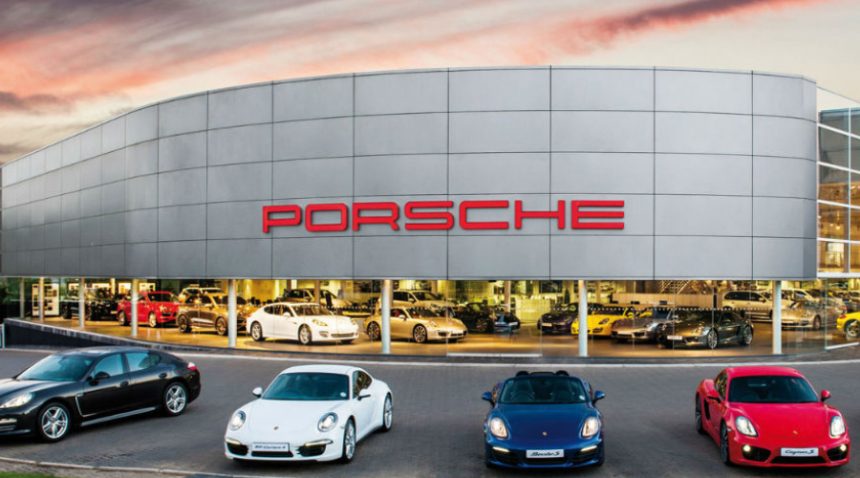From January to June, the company delivered 146,391 cars worldwide
Porsche has reported a 6% decline in global car deliveries during the first half of 2025. From January to June, the company delivered 146,391 cars worldwide. This slowdown continues the weaker trend seen earlier in the year. The fall in sales is due to slower demand in important markets like China and Germany, new tariffs in the U.S., and increasing competition, especially in the electric car segment.
China and Germany See Sharp Declines
Porsche’s sales in China dropped by 28%, with only around 21,300 cars sold in the first half of the year. China is one of Porsche’s largest markets, so such a big fall hurts the company’s global performance. Local electric vehicle makers in China, such as BYD, are growing fast. They offer luxury EVs at competitive prices, making it harder for international brands to hold market share.
In Germany, which is Porsche’s home market, sales dropped by 23% to roughly 15,973 cars. The drop in demand is linked to higher living costs, weak consumer confidence, and growing price sensitivity. As a result, the overall European market also declined by 8% during the first six months of 2025.
North America Brings Some Good News
While Europe and China struggle, Porsche sees success in North America. In the first half of 2025, the company delivered 43,577 cars in the region, marking a 10% increase compared to last year. This is Porsche’s best-ever performance in North America during the first half of any year.
The company managed to overcome supply chain problems and deal with U.S. tariffs better than expected. By adjusting prices and keeping inventories well-stocked, Porsche stayed ahead in the competitive American market. Strong demand for SUVs and sports cars helped drive the record growth.
Porsche’s Shift to Electric Vehicles
Electric and plug-in hybrid cars now make up 36% of Porsche’s global deliveries. This is a major increase from the same time last year, when the figure was around 21%. Fully electric cars alone account for about 23.5% of total deliveries. Plug-in hybrids represent another 12.6%.
The electric version of the Macan SUV is leading the change. Nearly 60% of Macan sales now come from its electric model. Porsche sees electric SUVs as a key part of its future and continues to invest heavily in electric platforms, battery development, and charging solutions.
Some Models Perform Better Than Others
Among Porsche’s various models, some are doing better than others. The Macan sees a strong 15% growth in sales, helped by the launch of its electric version. The Panamera also grows by 13%, boosted by a new plug-in hybrid version.
On the other hand, the famous Porsche 911 sees a 9% decline. The company is preparing to launch an updated model, which has caused some buyers to wait. The smaller 718 models—Boxster and Cayman—see a 12% fall, mostly due to supply limitations and upcoming changes.
The Taycan, Porsche’s first fully electric car, sees a 6% drop in sales. While it was very popular at launch, newer EV options from competitors and higher prices have made it harder to maintain earlier momentum.
Tariffs Add Pressure
Earlier this year, the US imposed new tariffs on auto imports, which affected Porsche’s pricing and profit margins. Even though sales remain strong in North America, the company now faces lower earnings from each car sold due to higher costs. To deal with this, Porsche adjusts its yearly forecast, cutting revenue and profit margin expectations.
In April, Porsche lowered its full-year revenue guidance from an earlier range of €39–40 billion to a new range of €37–38 billion. Expected profit margins are also reduced from the earlier 10–12% range to a more modest 6.5–8.5%. The company stresses that its goal is to protect brand value rather than chase higher volume.
How Porsche Is Responding
Porsche is working on several strategies to recover from the sales slump. It is investing more in electric and hybrid technologies while also improving combustion engine efficiency for markets where EV adoption is still slow.
A key part of the strategy is increasing flexibility. The company is adjusting production levels based on regional demand. It is also launching new versions of popular models to keep the product line fresh.
In Germany, Porsche has started restructuring operations. This includes reducing the number of workers and shifting more resources to electric vehicle production. These changes are designed to lower costs and prepare for long-term growth in clean energy vehicles.
Outlook for the Rest of 2025
The second half of the year will continue to be challenging. Tariffs from the US remain a concern, and the Chinese market continues to show signs of weakness. Consumer demand in Europe is not expected to recover quickly either.
However, the success of the electric Macan SUV gives hope. If Porsche can maintain strong sales in North America and boost demand for its new EVs in other markets, it can reduce the impact of losses in China and Germany.
The company also plans to refresh more models in the coming months. These updates, combined with growing interest in hybrids, may help attract more customers and stabilize global deliveries.
Can Porsche Bounce Back?
Porsche’s ability to recover depends on several things. First, global trade policies need to remain stable. If tariffs increase again, profit margins will suffer. Second, competition from other luxury EV makers, especially in China, must be addressed with strong local marketing and better pricing. Third, new model launches must succeed, especially in the electric SUV segment.
If these areas improve, Porsche can begin to grow again. The company has a strong brand name, high product quality, and loyal customers. Its focus on “value over volume” also means it doesn’t rely only on selling more cars—it focuses on selling better cars at healthy profit margins.
Final Thoughts
Porsche is going through a rough patch in 2025. A fall in deliveries, pressure from tariffs, and rising competition have created serious challenges. Still, the brand shows strength in key markets like North America and continues to innovate with electric vehicles. Whether Porsche can bounce back depends on how well it adapts to changing global conditions, how successful its new models are, and how it manages rising costs.
The next few months will be important. If demand for electric models picks up and global trade tensions ease, Porsche could return to stronger growth. For now, the brand is staying focused on quality, innovation, and strategic adjustments to ride out the slowdown and prepare for the future.





